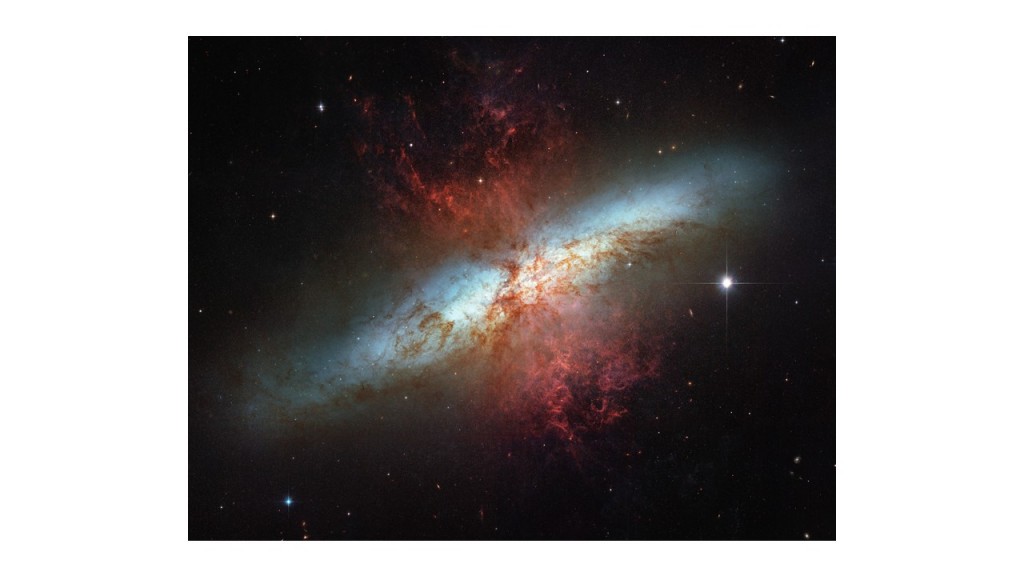By Michelle Meech
In my late 20’s, when I had begun to fall in love with God again, I remember reading Carl Sagan’s The Dragons of Eden. Sagan offers a profound story about our relationship with God and our relationship with one another in his theory of the evolution of intelligence, which I interpret as our way of understanding God’s presence in our lives.
Chapter 1 is called The Cosmic Calendar because it offers a notable series of charts – an attempt to help us grasp the timeline of the universe determined thus far by scientists. If the Big Bang happened on January 1, then the Milky Way began to form on May 1, the Earth formed on September 14, and so on. The most impressive part of this for me is that the first humans don’t appear until around 10:30pm on December 31. Humans are just a small part of the whole thing. Humanity is simply a part of God’s holy creation, not the center of it.
But in our hubris, most humans have read the story of the universe through our own eyes, believing ourselves to be the center of it. This is understandable – we can only tell our own story after all. But there have been and still are faiths and perspectives which have a deeper reverence for the earth, offering a countercultural story to the human inclination toward domination and control brought about by our own fears and desires.
Rather than bemoan our sin of extreme anthropocentrism, focusing on humanity yet again, I wonder what God is doing. Rather than shake my finger at humanity’s vain and hopeless schemes to lay waste to our planet home, I want to know how deepen my reverence for God’s whole creation. Because it is in this that I find hope. It is in finding and experiencing this connection to my own origins in the very elements of this planet, that I am truly able to connect to Christ and empty myself of my own fears and desires.
What it boils down to is this: How might I move more in concert with the whole of creation as if I were a part of it, accepting and trusting in God’s Reign of abundance and grace, rather than believing in scarcity as the inevitable outcome of sin. In other words, can I really believe in the Resurrection?
The Resurrection is the center of our salvation story, as Christians. Because of the Resurrection, we believe (in varying ways) Grace is the final word, not sin. We believe life conquers death. When I ask the question, “What is God doing?” the answer I come to on my better days is, “God is doing life.” I come to this answer because of my Christian beliefs and because of that chart given to me by Carl Sagan. The force of God is always going to be seeking ways for life to thrive because God is the life-force. And while God cares deeply for all of creation, I don’t think God will hesitate to work around humanity’s careless sin. Resurrection happens, despite our best efforts at sin. In the end, God’s will be done.
I find this hopeful. I have faith that God will do whatever needs to be done to ensure that life will continue. And because I see this is what God is doing, I am called to respond. In fact, I am called to repent. If God is the life-force, employing the whole creation, then my response is to know my place in this creation – my part in the Paschal mystery, the bigger mystery of life. Science helps me with this (thank you, Carl Sagan), but so does our tradition.
We have to look no further than our own liturgical year to find a map for this. An intrinsic understanding of and love for God’s cycle of abundance is embedded in how we worship. Liturgy, at its best, is an action that helps us understand God, experience a deeper connection to one another, and offer a way for us to respond to both. As Christians, our most common experience of this is Sunday liturgy – whether that be Eucharist or Morning Prayer or the forms our ecumenical brothers and sisters use.
What if we moved even more deeply into our tradition? We tend to focus on the rest of creation only in the spring when it’s time for planting, when it’s time to use the earth for our benefit. But what if we took advantage of the whole liturgical year to re-mind ourselves of the greater creation? Because, although each Sunday we celebrate our reconciliation with God through Christ, focusing on a single Sunday at a time can get as myopic and unfocused as focusing on humanity as the center of creation.
Our tradition is not devoid of reverence for the whole of God’s creation. Our tradition is much, much bigger than that. It is embedded in an understanding of God that goes far beyond the human story. It begins each year at the Easter Vigil with fire and water, air and earth, as we tell the story of creation and our place in it. And, if we’re attentive, it continues – moving us toward and re-minding us of our connection to the life of the whole planet, indeed the entire universe. Our tradition, our liturgical year, is a map for the Paschal mystery – the reconciliation of the whole creation to God.
Michelle Meech currently lives in Ypsilanti, MI with her dog Bella. She leads meditation retreats, teaches the Enneagram, spends too much time on Facebook, and writes her sermons while listening to trip hop music (easy listening for post-moderns). Michelle is also an Episcopal priest and is humbled to serve as the Ministry Developer in the Diocese of Michigan. You can find her blogging at www.foldedandunfolding.wordpress.com.

